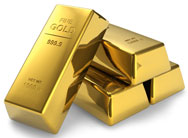Lady Mayoress of London
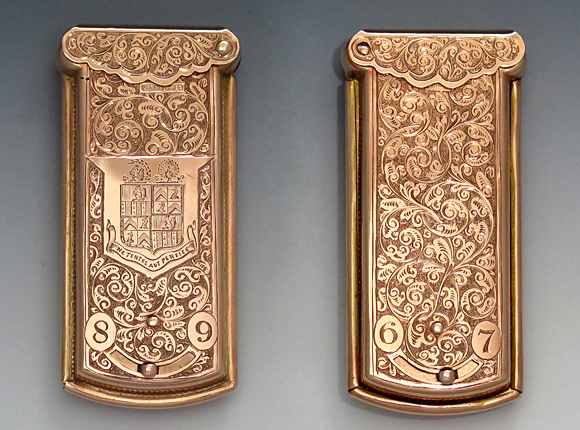
Front and back.
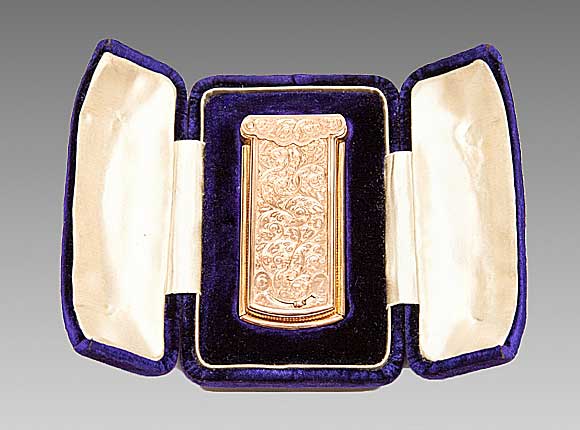
View of the back of the needle case in its original presentation box (photograph from Hansons Auction)
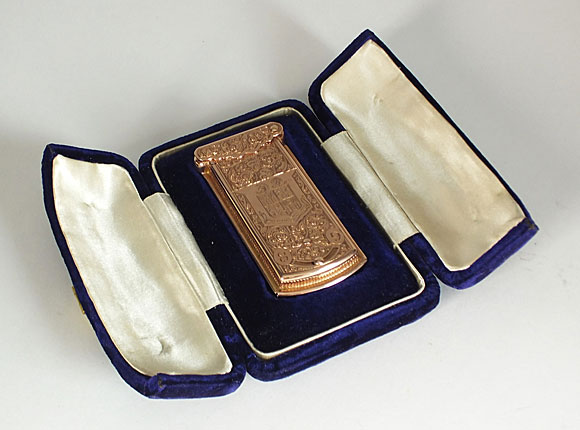
View of the front of the needle case in its original presentation box (photograph from Hall's Auction)
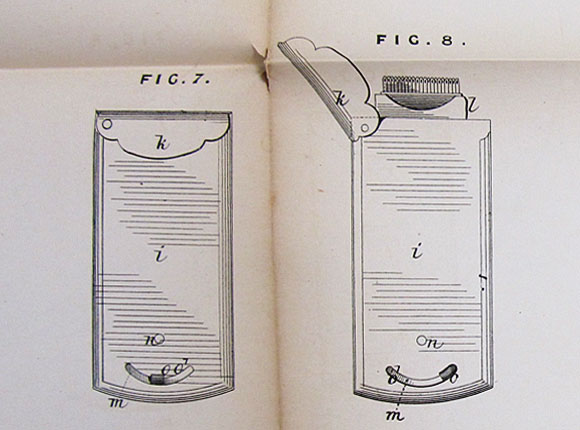
UK Patent 1868-3517 drawing
Design Details
Needle Case Type: |
Quadruple |
Patent/Registered to: |
William Avery, Redditch Needle Manufacturer and Albert Fenton of the same place, Machinist |
Patent/Design Representation #: |
Mechanical Patent: #3517 |
Patent/Design Registration Date: |
November 19, 1868 |
Location of Patent/Design Registration: |
British Library - Business and Intellectual Property Centre – London |
Reference #: |
1868-3517, Figures 7-10 |
Dimensions: |
3.3 x 7 |
Material: |
9 carat gold |
Name Variations: |
The Lady Mayoress of London 1896-1897, G. H. Johnstone and Co - Birmingham |
Other Variations: |
See other Quadruples |
US Patent |
US 1870-98904 |
Additional Photographs
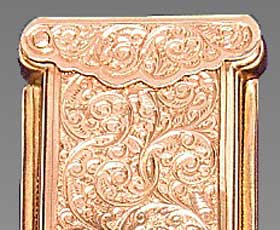
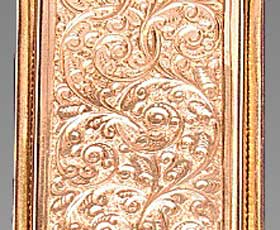
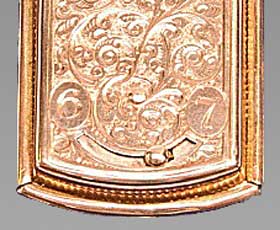
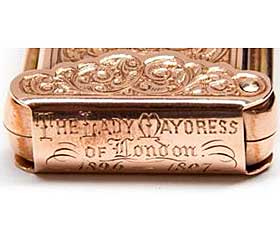
Detail views of the back and lid showing "The Lady Mayoress of London 1896-1897" inscription (photographs from Hansons Auction)
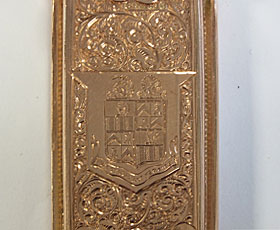
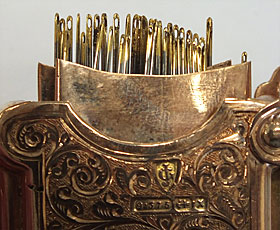
Detail views showing the crest on the front and the makers marks (photographs from Hall's Auction)
Sold at Auction December 3, 2014 by Hansons Auctions, Etwall, Derbyshire, UK. Auction Description: A Victorian 9 carat gold needle
case, with four mechanical sections containing original graded needles, decorated throughout with a foliate scroll design and coat of arms, engraved
to the top 'The Lady Mayoress of London 1896-1897', G H Johnstone and Co, Birmingham 1897, in original purple velvet fitted case, 7cm long Note:
presented to Lady Faudel-Phillips, wife of Sir George, Lord Mayor of London.
Sold at Auction March 18, 2020 by Hall's Fine Art Auctioneers, Shrewsbury, UK. Auction Description: A cased Victorian 9ct gold presentation
needle case, by G.H. Johnstone & Co, Birmingham 1897, presented to Lady Faudel-Phillips, wife of Sir Gerorge, Lord Mayor of London, the bright cut
engraved case with central crest, the hinged cover engraved 'The Lady Mayoress of London 1896-1897', opening to reveal four segmented compartments
each housing needles, the base of the body with two duel slide mechanisms to raise the internal compartments individually, presented within original
fitted case, 7cm x 3.5cm, total weight approx 47.3g.
Lady Mayoress of London 1896-97
Helen Levy was born around 1843. She was the daughter of Joseph Moses Levy, the proprietor of the London Daily Telegraph
newspaper. Helen married George Faudel-Phillips in 1867 and they had five children: Beatrice, Nellie, Benjamin, Lionel and Stella. She
died in 1916 and was buried in the Jewish section of the cemetery in Hertford, a town north of London. The portrait of Lady Faudel-Phillips
shown below was painted by the American portrait artist John Singer Sargent in 1898. Click on the photo to see a larger version of it.
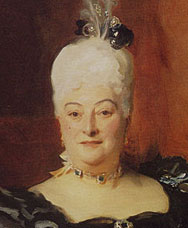
Lord Mayor of London 1896-97
George Phillips was born in 1840 and later adopted the surname Faudel after his maternal uncle. Faudel-Phillips became lord Mayor of London
in 1896 and served in that role for a year until 1897. He was the second Jewish lord mayor as his father held the same position 31 years
earlier in 1865-66. According to the Jewish Encyclopedia of 1906 “as chief magistrate of the city, Faudel-Phillips received Queen
Victoria at Temple Bar on the occasion of the Jubilee thanksgiving service which was held at St. Paul's Cathedral and subsequently at the Mansion
House. His year of office was one of remarkable philanthropy. He raised funds which amounted, in the aggregate, to £1,000,000 for the
relief of the famine in India and for other charitable objects. He was the recipient of numerous honors at the close of his term of office,
when he was created a baronet, and, in recognition of his services to India, received the Grand Cross of the Indian Empire.” Sir George
Faudel-Phillips died in 1922 and was buried next to his wife.
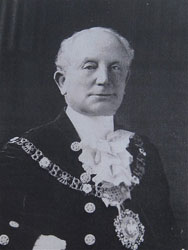
Gold
Gold is a bright yellow precious metal used to make jewelry, coins and elaborate decorative objects. Because of its rarity, distinct color,
malleability and non-corrosive properties gold has become the symbol of wealth and historically gold coins were the way in which commerce was often
transacted. Until the 1930s the gold standard was used as the monetary policy between individuals and nations. Jewelry and ornamental
objects made of gold come in several different purities because pure (24k) gold is soft and easily damaged. Most gold is alloyed with other
metals such as copper, silver or palladium, copper being the most common. For example some 18k gold contains 25% copper which gives it a rose
gold color whereas 18k white gold contains 17.3% nickel, 5.5% zinc and 2.2% copper.
